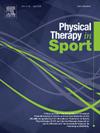Effect of open kinetic chain exercises during the first weeks of anterior cruciate ligament reconstruction rehabilitation: A systematic review and meta-analysis
IF 2.2
3区 医学
Q1 REHABILITATION
引用次数: 0
Abstract
Background
Closed kinetic chain (CKC) exercises are the gold standard for rehabilitation after anterior cruciate ligament reconstruction (ACL-R). Open kinetic chain (OKC) exercises may provide benefits, but their use in the early stages remains controversial.
Objective
To determine the effect of OKC exercises during the first weeks of rehabilitation after ACL-R.
Study design
Systematic review and meta-analysis.
Methods
A comprehensive literature search was conducted according to PRISMA guidelines from inception to April 2024. The methodological quality of the included studies was assessed using the ROBINS I and RoB-2 tools. The changes in outcomes from pre-to post-intervention were quantified using standardized mean differences.
Results
Overall, the methodological quality was low and the population, intervention, comparison, outcome, time (PICOT) criteria were heterogeneous. However, OKC was found to have beneficial effects on patient reported outcomes (PROMs), strength, function, and return to play, especially when performed at least four weeks after surgery in rehabilitation programs that began with CKC exercises.
Conclusion
The evidence suggests that OKC exercises may provide benefits and no adverse effects in the early stages of rehabilitation after ACL-R, particularly when initiated after CKC exercises. These findings are consistent with current clinical practice guideline recommendations for the inclusion of OKC in rehabilitation programs.
开放动力链运动在前交叉韧带重建康复第一周的效果:系统回顾和荟萃分析
研究背景闭合运动链(CKC)锻炼是前交叉韧带重建术(ACL-R)后康复的黄金标准。研究设计系统综述和荟萃分析方法根据PRISMA指南对从开始到2024年4月的文献进行了全面检索。采用 ROBINS I 和 RoB-2 工具对纳入研究的方法学质量进行评估。结果总体而言,研究的方法学质量较低,人群、干预、比较、结果、时间(PICOT)标准不一。然而,研究发现 OKC 对患者报告的结果(PROMs)、力量、功能和重返赛场具有有益的影响,尤其是在术后至少 4 周开始进行 CKC 运动的康复计划中。这些研究结果符合当前临床实践指南中关于将 OKC 纳入康复计划的建议。
本文章由计算机程序翻译,如有差异,请以英文原文为准。
求助全文
约1分钟内获得全文
求助全文
来源期刊

Physical Therapy in Sport
医学-康复医学
CiteScore
4.50
自引率
8.30%
发文量
125
审稿时长
39 days
期刊介绍:
Physical Therapy in Sport is an international peer-reviewed journal that provides a forum for the publication of research and clinical practice material relevant to the healthcare professions involved in sports and exercise medicine, and rehabilitation. The journal publishes material that is indispensable for day-to-day practice and continuing professional development. Physical Therapy in Sport covers topics dealing with the diagnosis, treatment, and prevention of injuries, as well as more general areas of sports and exercise medicine and related sports science.
The journal publishes original research, case studies, reviews, masterclasses, papers on clinical approaches, and book reviews, as well as occasional reports from conferences. Papers are double-blind peer-reviewed by our international advisory board and other international experts, and submissions from a broad range of disciplines are actively encouraged.
 求助内容:
求助内容: 应助结果提醒方式:
应助结果提醒方式:


